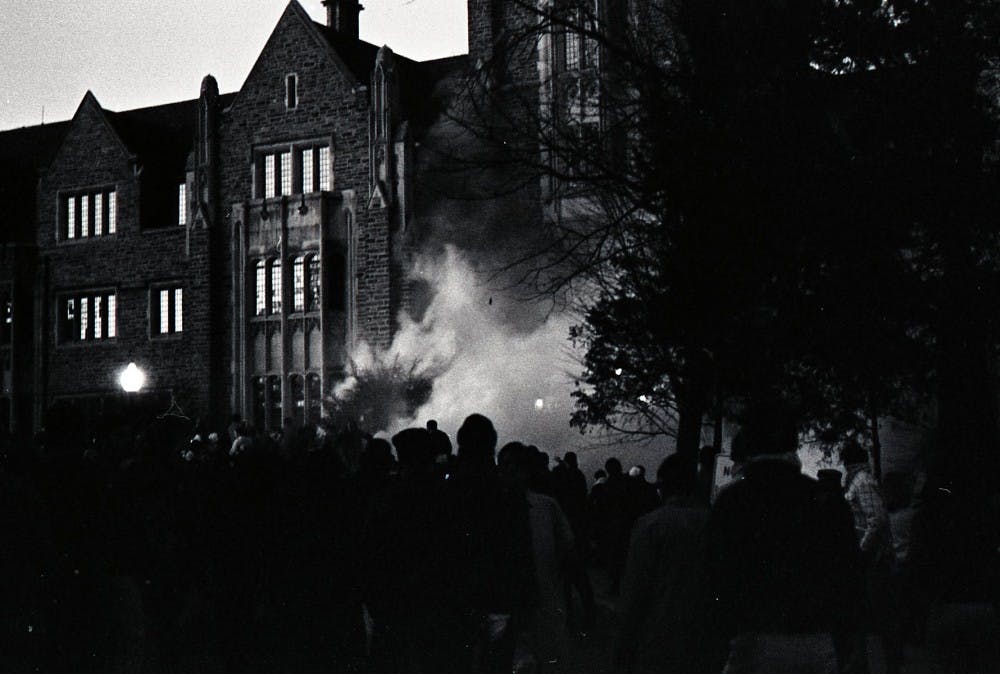On February 8, 1968, three 18-year-old students from South Carolina State University, a HBCU in Orangeburg, SC, were killed by state highway patrolmen, who opened fire on a crowd of unarmed college students. Two years later, similar shooting deaths occurred at Jackson State University, another HBCU in Mississippi, and most famously at Kent State University, where four white students were killed by National Guards. This violence was reflective of the tumult of the era, where students across the nation not only made demands for change in the nation, but at the very institutions that were charged with preparing them for the future; a future that many of these institutions were unprepared for the future that those students demanded. Duke was such an institution.
Like every protest, the Allen Building Takeover was not unique—there were student strikes at San Francisco State University and an armed student takeover at Cornell University that occurred only two months after the Allen Building Takeover, mirroring the outbreak of sit-ins that went viral in the Spring of 1960 after four Black students from North Carolina A&T, another HBCU, famously began a movement by sitting down at a segregated lunch counter at a Greensboro Woolworth’s department store. The Allen Building Takeover was singular, though, because of what it meant for the future of Duke and the city of Durham.
With the integrating of Duke in 1963—Mary Mitchell Harris, Gene Kendall, Wilhelmina Reuben-Cooke, Cassandra Smith Rush, Nathaniel B. White, Jr., forever known as the “First Five”—and campuses across the nation, the political passions and activism that were gestating at Historically Black Colleges and Universities began to flower.
That flowering at Duke took shape in the Spring of 1968, immediately after the shooting death of Martin Luther King, Jr., with the Silent Vigil, remembered as the largest student protest in the history of the university. Among those student demands, were increased wages and the right to collective bargaining among Duke’s non-academic workers—many of whom were Black Durhamites, who never had the opportunity to attend an institution like Duke. That flowering was in full bloom on February 13, 1969 when dozens of Black students occupied the Allen Building, supported outside by White allies who could bear witness to their demands for a public unprepared for the rage that had been bubbling within a generation that was no longer going to be denied access to their dreams.
The first of the demands by those students who occupied the Allen Building was for the formations of a “fully accredited” Department of “Afro-American” Studies. I write today as the James B. Duke Professor and Chair of the nationally and internationally renowned Department of African & African American Studies, in large part, because of the vision and bravery of those students 50 years ago.
It speaks volumes that the Allen Building Takeover has resonated for virtually every generation of student activist at Duke over the last five decades—that a full 50 years later, it is a beacon of possibility for a generation of Asian and Asian American students making their claim on, not just diversity at Duke, but real inclusion.
Duke is not what it once was, but it certainly is not where in needs to be. We can thank those brave souls of 50 years ago for always making that clear to us.
Mark Anthony Neal, Ph.D. is the James B. Duke Professor of African and African American Studies and the chair of the African and African American Studies department.
Get The Chronicle straight to your inbox
Sign up for our weekly newsletter. Cancel at any time.

